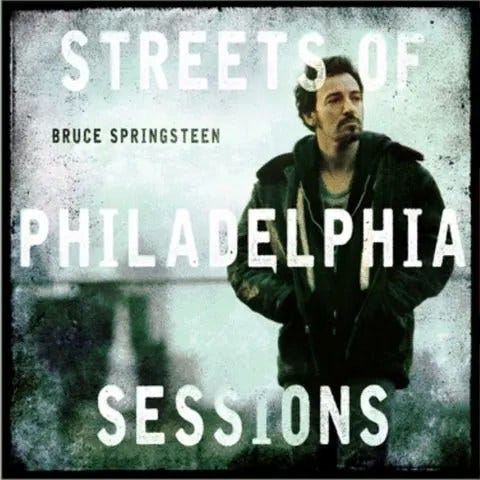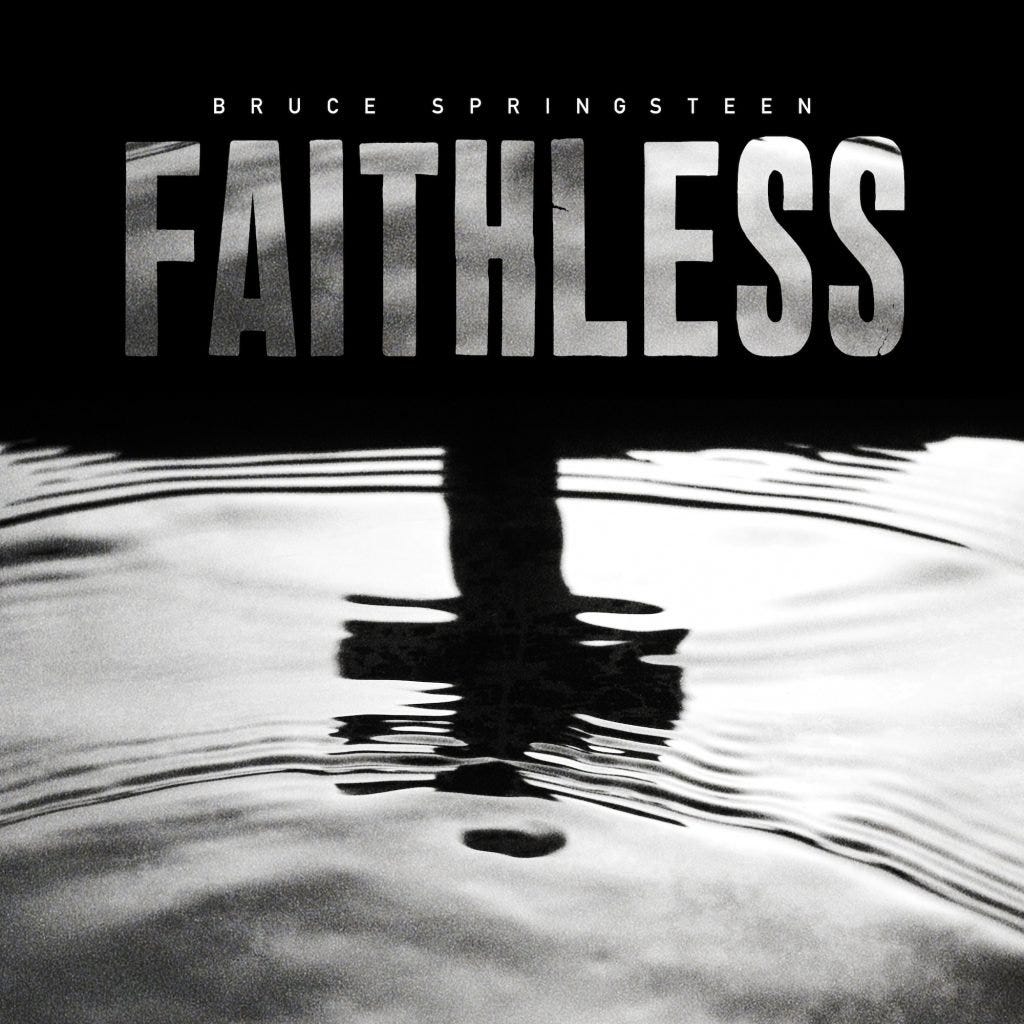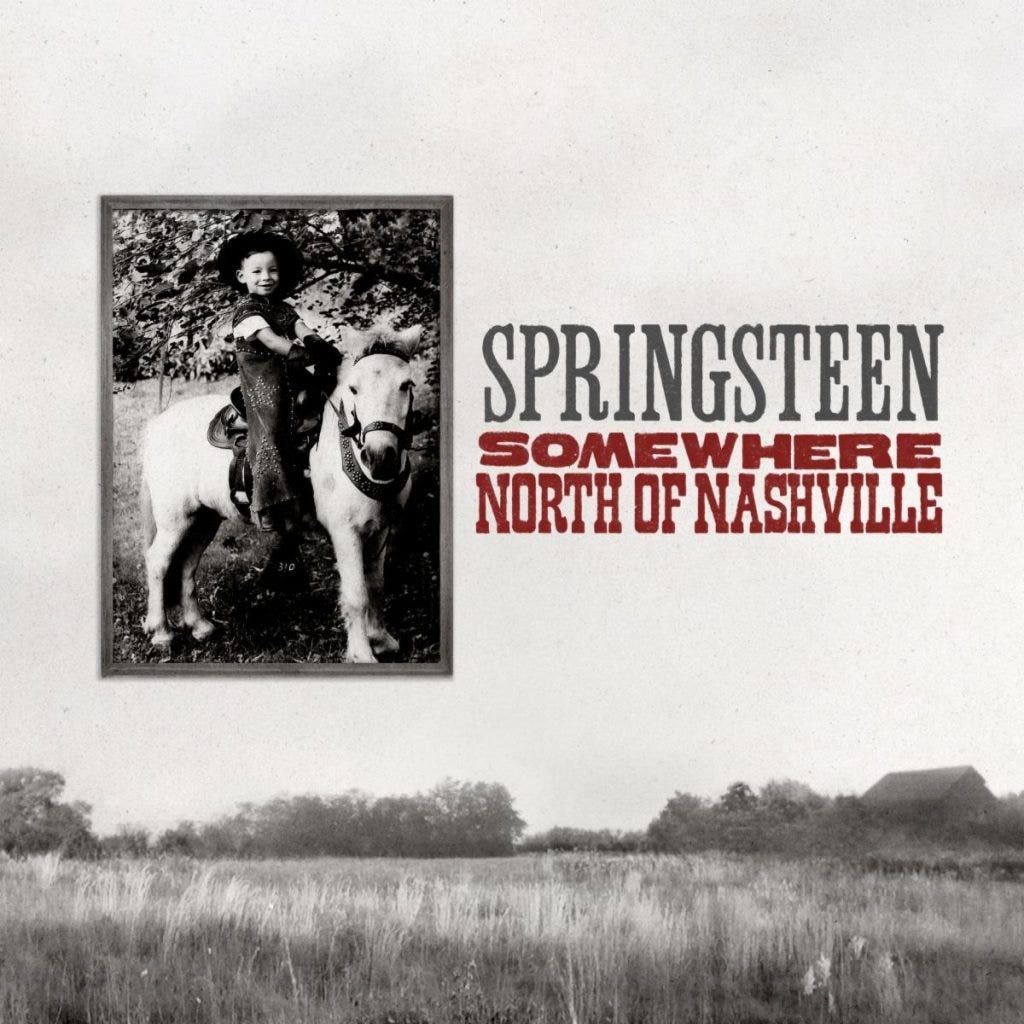A perfect world or one false move?
Bruce Springsteen just released, 'Tracks II,' a box set with 7 unreleased albums. As you would expect, there is some sublime music and some forgettable tunes, and I'm here to weigh in on all of it.
As I made my first pass through Bruce Springsteen’s new Tracks II box set, I found myself thinking I probably wouldn't listen to any of the seven albums of largely unreleased material more than two or three times. At the same time, I also saw nearly all of these as more successful than many of the albums that Springsteen actually released during this period. They are more cohesive, more compelling than grab bags like Working on a Dream, Wrecking Ball, or High Hopes. I didn’t expect to listen much to these because I rarely listen to those.
I’ll stand behind that latter sentiment, but probably not the former. For the more I dip into these albums, having listened to most everything at least twice, and some of it three or four times, I find that some of this is sinking in, that Springsteen’s craft is strong enough to merit adding these to rotation.
I suppose that initial feeling was borne of abundance and a lack of dynamics. Much of this is mid-tempo, relying more on Bruce as a one man band. There may be an entire album dedicated to the sessions that yielded “Streets of Philadelphia,” but that familiar synthetic string keyboard sound isn’t limited to that disc; it’s all over these songs, giving many of them a sort of generic sheen that does the music no favors. Over the course of listening to these 83 tracks, that dearth of variety led one song to bleed into the next.
But over time, as each album began to cohere and make its boundaries and intentions known, the differences became more pronounced. No one is going to trade any of this for Darkness on the Edge of Town, but you would certainly be justified in pulling this shadow history of the past 40 years off the shelf before you head to much beyond the highlights of what was officially released from that era.
This music was drawn from 1983 to 2018, but most of it seems to be drawn from the decade between 1995 and 2005, something seen as a bit of a fallow period for the Boss. After releasing two albums on the same day in 1992 — Human Touch and Lucky Town — he released only one album in the next decade, The Ghost of Tom Joad. But he was busy, and something — perfectionism, fears of commercial indifference, or something else — kept those albums on the shelf until now.
Unlike 1998’s incredible box set, Tracks, which confirmed suspicions and filled historical gaps with a handful of songs here, and a stray track or two there, this one gathers entire albums. As Springsteen writes in the liner notes, “The seven albums presented here have for one reason or another never seen the light of day. After recording, mixing, and reviewing them I felt I’d found faults that made me unsure of turning them into major releases… the joy of these records to me now are their imperfections… I’ve played this music to myself and often to close friends for years now. I'm glad you'll get a chance to finally hear them.”
The result is a collection that would be a decent career’s worth of music on its own, but is instead a sort of “what if?” To my mind it’s “What if something like Bandcamp existed in the 1990s?” I ask, because Bruce himself seems to acknowledge his dilemma. “After recording, mixing, and reviewing them I felt I’d found faults that made me unsure of turning them into major releases,” he said of these albums. For an artist of the stature of Springsteen, an album is an event, necessitating the creation of something akin to a political campaign. It requires a tour, a marketing campaign, a new look, an advance team… one doesn't simply dump 10 new tracks on the marketplace. But what if he could have done so? What if, like a rapper who decides his next album is actually a mix tape, not to be considered a part of the official cannon, Bruce could have simply said, “Hey, I wrote a few mariachi songs… like and share!”
So consider this an alternate history as you slot these albums into his thin discography during these years and wonder how the trajectory of his career might have changed had we had access to this music at the time.
One last thought: I'm struck by the covers that Bruce's team and/or Sony cooked up for these seven albums. It’s no small task to create seven distinct looks at once. They are largely monochrome, variations of black, white, and grey. It fits with Springsteen's overall palette: from The River to Born to Run to Nebraska, early Bruce usually meant a black and white image with a splash of color to catch the eye. Here, three of the new albums have black and white covers, two more are based on that scheme with a bit of color, and even the Streets of Philadelphia Sessions is fairly washed out. Only Inyo depicts any vitality in its cover, and that fits with the sprightly songs within.
What follows are some thoughts about each of the seven albums.
Disc 1: LA Garage Sessions ’83
The most interesting from a historical standpoint, LA Garage Sessions '83 is the connective tissue between Nebraska and Born in the U.S.A. Bruce could have released a hell of a box capturing everything from 1982 to 1984, but with this music finally seeing official release, it seems that ship has sailed. What we have here is a boiling down of the multi disc bootlegs that have made this material available for the past couple of decades or more. It affirms how effortlessly Springsteen can craft a catchy song on his own. Unlike Nebraska, however, one can imagine a track like “Little Girl Like You” or “One Love” fleshed out by the E Street Band and wonder why they were abandoned. I suppose it's a matter of abundance. Perhaps the biggest surprise is the inclusion of “The Klansman.” It’s a startling enough song that seems more natural with a bootlegged tape hiss. Here, in sparkling clarity, this tale of a kid dragged into a racist family rut feels laid bare, and one hopes the listener brings all the nuance needed to keep this a cautionary tale. Beyond that, it's nice to have classics like "County Fair," "Richfield Whistle" and a stark "Shut Out the Light" on an official release.
Disc 2: Streets of Philadelphia Sessions
This is the one that most fans have wanted to hear, the one most discussed at the time of its recording. Tasked with creating a song for the film Philadelphia, Springsteen decided to indulge a fascination with hip hop and loop-based music. That yielded the classic song for the film’s soundtrack and "Secret Garden," which landed on the 1995 Greatest Hits album, but the rest of the session, which was mixed and ready for release earlier in 1995, was shelved. I'll admit this is the least interesting to my ears. I think Springsteen perfectly captured what he needed to on “Streets of Philadelphia,” and then mined that same thin vein for the rest of the session. An itch was scratched, and he rightly moved on. But Bruce's beard was not grown in vain; it was the perfect “look, I'm different!” move for the Ghost of Tom Joad tour that followed. There are incongruities here. I don't have the set and thus lack the book and any session information, but it’s clear the rollicking “One Beautiful Morning” doesn’t fit here. Pushed to come up with a track here for a playlist, I’d opt for “Between Heaven and Earth, which, like “Streets of Philadelphia",” feels like a song that organically uses the loops as opposed to feeling like something tacked onto a song that would be better without it.
Disc 3: Faithless
This is a written-to-order soundtrack from 2005 for a movie that was never made. The result is Bruce‘s gospel turn. It makes sense that Springsteen was channeling characters created by someone else, conveying sentiments that were not his own, because I don’t necessarily believe in Bruce’s belief here. It’s none of my business and none of my concern where he stands from a spiritual point of view, but I can’t help but compare this to the hectoring spirit of Bob Dylan’s Christian trilogy. You may not have liked it, and you might’ve bristled at his condemnations, but you did not for a second doubt Dylan’s conviction. Here, we are given a set of songs that play like a genre exercise. Even if there is some faith at the heart of it, you know we’re just an international catastrophe away from the return of anthemic, secular Bruce. All that said, some of these are quite beautiful. The melody of the title song is compelling, an ethereal choir sweetening the one-word chorus. Meanwhile, the spirited “Going to California” feels like it would have been a better fit in on the following album. The best here is “My Master's Hand,” which I would have guessed was the name of the movie in question given the more fleshed out arrangement that gives this a feel of a centerpiece.
Disc 4: Somewhere North of Nashville
This is the headscratcher from a commercial standpoint. Recorded in 1995 at the same sessions that yielded The Ghost of Tom Joad, it seems the Boss wanted to let his band stretch out and play a bit before hunkering down to make “serious” music. Would everything be different if he had waited until this point in his career to release two albums on the same day? We’ll never know, but we do know we were denied an awfully fun set of songs for three decades. From the opening blast of “Repo Man,” this is a rollicking good time. Oddly enough, the title track is a later song that doesn't really fit with the rest. It is an improvement on the lo-fi version found on the western album Springsteen did release, 2019's Western Stars. This album also includes twangy versions of a couple of songs originally meant for Born in the U.S.A.: “Stand On It” and “Janey Don’t You Lose Heart,” the latter’s 1983 version a highlight of the first Tracks set. This also features a wonderful cover of the Johnny Rivers’ classic, “Poor Side of Town.”
Disc 5: Inyo
Inyo is one of the two biggest revelations here, an album of songs not unlike the Tom Joad tunes, but many featuring mariachi backing. Springsteen says he wrote the songs while riding his motorcycle around California and while on the Tom Joad tour in the mid 1990s. The result is one of the most cohesive, entertaining albums of this set. Unlike elsewhere, where Bruce seems more interested in the genre exercise than in the songs, he seems invested in these tales of the border and performs the songs with passion. The title track is a beautiful tale threaded through with a mournful fiddle line, while “Adelita” is a shuffling waltz with flamenco guitar, mariachi horns, and a full string section. It’s a gorgeous tune. Even “The Lost Charro,” where Springsteen’s creaky falsetto is threatened by the weight of the corny arrangement, seems to work. My favorite is “Ciudad Juarez,” a tale of a worker headed to the border town looking for a wage, a proud trumpet line like a beacon marking the quest. Had this been released at the time, it would have taken him more firmly in the singer-songwriter direction of Tom Joad, and been one of his most satisfying albums of the last three decades.
Disc 6: Twilight Hours
The other revelation here is Springsteen’s album full of songs in a lounge-y, Burt Bachrach vein. Like Inyo, this is successful because Bruce gives himself over fully to the concept. Though one would expect this to feel like yet another genre exercise, his clear affection for the form shines through. One of his strongest batches of songs coupled with a passionate yet restrained performance leads to an album I never could have imagined I would want. It’s a toss up as to whether this or Inyo is the most successful collection here, but suffice to say that unlike the other five albums, either would have been a worthy stand-alone release. I suppose that is because unlike something like Faithless, which feels more rote, this sounds like the Boss has bought in, a septuagenarian singing songs for septuagenarians and those who love them. He wrote these songs at the same time as those found on Western Stars, but while that album always struck me as flat, this has life, Springsteen taking a bit of a risk that pays off.
Disc 7: Perfect World
This is the closest to what people likely expect from a Springsteen album: sturdy, full-band anthems with broad themes and choruses built for audience participation. This would likely have seen the greatest success had it been released as a stand-alone album at some point. However, that success would likely have been akin to that of his albums from the late aughts and early teens. Magic went platinum in 2007, while Working on a Dream and Wrecking Ball went gold. High Hopes and all that followed didn't even do that well. Sales shouldn't be an indicator of quality — particularly these days — but those albums were inconsistent as Springsteen seemed to cast about for inspiration, and this is no different. There are standouts: the one-two punch of “If I Could Only Be Your Lover” and “Cutting Knife” late in the disc feel like the start of something, and the rockers like “I'm Not Sleeping” and “Rain in the River” are nothing if not stadium-ready tunes that demand performance. Still, the real takeaway after a few spins is that this serves to remind you of what you like about Springsteen’s music and then sends you back to grab an album where he did it better.










